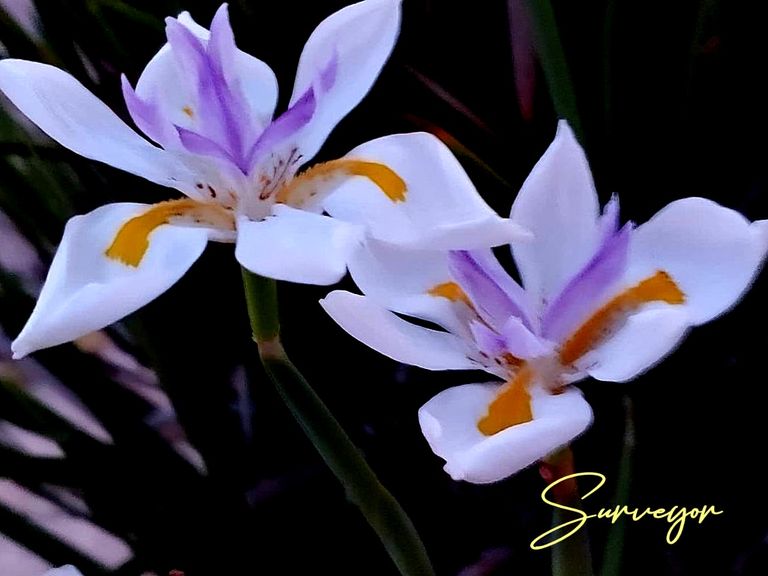
People often say the iris is one of the more interesting flowers in nature.
Their delicate nature imbues the qualities we all wish we currently have or want to obtain during our lifetime. The notion of the self combined with the selflessness for others is a rare combination.
I hope we can all reach the equilibrium some day. I believe in us all.
Strange facts about irises
The iris is the birth month flower of February, the 25th wedding anniversary flower, and the state flower of Tennessee.
Bearded irises actually only have 3 petals, the other 3 “petals” are large sepals.
The Iris has been around for a while. There is a fresco painting located in King Minos’ palace of the
Island of Crete in Greece. The palace was built around 2100 BC.
The “Fluer de Lis” is a graphic representation of the iris.
The iris is often seen as a flower of royalty and power.
There are bearded and beardless irises.
The Louisiana, a variety of beardless iris, is native to the United States, and is found wild on the Gulf Coast.
The “beard” on a bearded iris is a fuzzy appendage located above the falls, or lower petals.
The roots of irises contain their fragrance.
Irises are available in many colors, but most commonly are purple, blue, white, and yellow.
source
All the details about iris growing. Great tips!
Zones:
Varieties suitable for zones 3-9
Height/Spread:
Irises come in many different sizes, some as short as six inches and others can grow up to four feet.
Dwarf varieties 6 to 12 inches tall and wide
Dutch varieties 1-1/2 to 2 feet tall and 6 to 12 inches wide
Tall bearded varieties range from 2 to 4 feet tall and 1-1/2 to 2 feet wide
Exposure:
Irises need full sun at least half the day. Some varieties will tolerate part shade such as Siberian irises and Pacific Coast natives (Iris innominata, Iris tenax, Iris macrosiphon and Iris douglasiana). Many irises will grow in total shade, but they most likely won't flower.
Bloom Time:
The majority of irises will bloom in spring or summer. Dwarf varieties tend to bloom earlier in spring, with intermediate sizes blooming later spring, and taller bearded varieties blooming late spring and summer. Reblooming varieties will produce flowers once in summer and again in fall.
Color:
There is an extremely wide variety of colors, ranging from white to almost black; although most common in shades of lavender, purple, white and yellow.
Toxicity:
Iris are known to be toxic to pets, with the bulb being the most toxic part. See more Common Poisonous Plants for Dogs and Cats.
Have you ever wanted to do an iris tour? I'd love to walk here and take in the sights.
There are some great tips on how to grow. I learned something new myself.